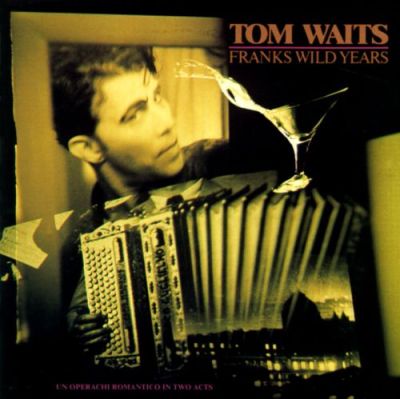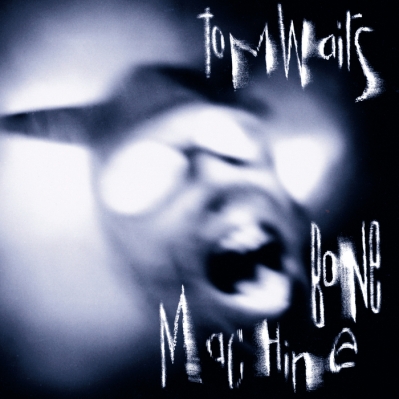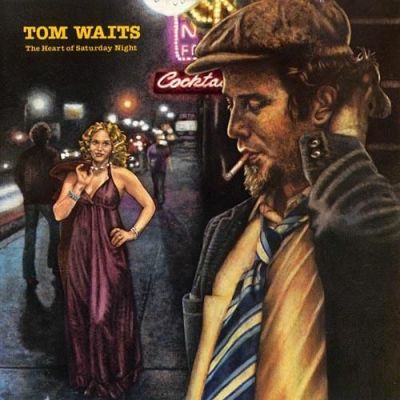Real Gone

Album: Real Gone
Artist: Tom Waits
Released: October 3rd, 2004
Highlights: Hoist That Rag, Don’t Go into That Barn, Dead and Lovely, Make It Rain, Day After Tomorrow
As Tom Waits transitioned from the inebriated, gloomy, and raspy-voiced man who sang late at night in a bar full of desperate souls looking for consolation in a drink to the mad junkyard prowler who seemed to make music with recycled spare parts, one element of his art stood as a solid rock unaffected by the massive changes going on around it: his trusty piano. Whether as the leading heart of gut-wrenching ballads or as the backbone of an orchestra of circus musicians and back-alley beggars, it was by using the instrument that Waits channeled the soul, jazz, and – especially – blues traditions into the alcohol-soaked misery of his early years as well as into the cursed cabaret music found in the later half of his career.
In “Real Gone”, though, probably looking for a brand new approach to composition and arrangements, Waits drops his piano by the same dump in which he likely picked up the tools his band had been working with since “Swordfishtrombones”, from 1983. And for the first time ever, in his fifteenth studio album, the singer-songwriter spends a whole record without sitting on a stool to either pour his sadness onto the keys or bang them wildly. As a consequence, in a career that carries a great deal of musical variety in spite of its aesthetic constancy, the 2004 release threatens to rank as Waits’ most uniquely sounding effort. Such major break, however, cannot be solely attributed to the absence of the piano.
Spiritually, “Real Gone” features a strong connection with both 1993’s “Bone Machine” and 1999’s “Mule Variations”. From the latter, it boasts the quite distinctive feeling that, with the exception of a few techniques that give it a more modern coating, the music it contains is coming from almost a century ago: its instruments creak, its production is dry, and as if transmitted by an old radio that has trouble grasping its signal, it sounds distant and corroded by static. Meanwhile, from the former, it borrows a demeanor that is simultaneously ferocious, loud, and dark; “Real Gone”, like “Bone Machine”, feels like it was recorded in one of the waiting rooms leading to hell, and it is so proud of its rowdy ways that, not satisfied with producing one vicious racket, it also opts to spit it all right in the face of its listeners.
The method “Real Gone” uses to reach those qualities is, however, distinct from the ones employed by those other classics of the singer’s catalog. Its grainy and aged aura emerges from the fact its pair of producers, Kathleen Brennan and Tom Waits himself, have opted to take a visibly lo-fi route here: none of the pieces that make up the music of “Real Gone” sound as they should in normal conditions, with the voice of Waits and the guitar work of the always masterful Marc Ribot coming off incredibly distorted and the percussion clanging like big metal trash cans. Even more unique, though, is how the record achieves its moments of aggressive racket: in these, “Real Gone” gains a nigh industrial core that is neatly summarized by the title of the brief interlude “Clang Boom Steam”, as these tunes move forward as if musically propelled by a noisy machine that is leaking gas and oil all over the place.
Amusingly, much of the sonic lunacy in these wilder songs is reached in outrageous ways: more specifically, through the usage of turntables and beatboxing. The first tool is not that ubiquitous, only showing up in opener “Top of the Hill” as well as in “Metropolitan Glide”, but it leaves a considerable mark thanks to how unexpected it is, adding an urban, funky, and modernized luster that rather than diminishing the value of Waits’ usually idiosyncratic performances only ends up augmenting it thanks to the dissonance between his organic traditional musical sources and the delightfully out of place disc scratching that accompanies these two tracks. The beatboxing, on the other hand, is more pervasive, as Waits explores the application of his mouth (and the wonderfully disturbing sounds it can make) as a percussive instrument; he spits, scats, growls, blows, gargles, and clears his throat through almost half of the album, and the result is a symphony of human horror that suits the menacing soul of his blues and folk-based compositions quite well, especially in the tale of slave-trade told in “Don’t Go into That Barn”.
Like any Tom Waits album, “Real Gone” has plenty of quieter tunes to build a more comfortable – yet not so welcoming either – counterpart to the cuts in which it flat out bangs. In the tracks of the sort that are found here, Waits appears like the old and weary bandleader of a rural outfit that travels around in a rickety chariot spreading some darkness through already gloomy pieces of the land. Songs such as “Sins of My Father”, “How’s It Going to End”, “Dead and Lovely”, “Trampled Rose”, and “Green Grass” are tales of death, despair, and crime told through incredibly well-formed and scrambled imagery. And without exception, they are backed up with basic, steady, and sparse acoustic instrumentation. Surely, every once in a while, the electric guitar of Marc Ribot pops up to deliver a fantastic lick, but mostly they are led by banjos and acoustic guitars that sound so old it feels like they could fall apart at any moment, while Waits sings like he could meet the same fate.
As a statement to the good taste and talent of Tom Waits and Kathleen Brennan, there is little to nitpick about the seventy minutes of music held by “Real Gone”. One could attack the unnecessary nature of the instrumental-only beatboxing of “Clang Boom Steam” and “Chick a Boom”, but they are so brief it hardly matters. Furthermore, it is possible to point at the length of “Sins of the Father”, which goes on for ten minutes, as excessive; but although the song does not have enough instrumental muscle to go such distance, it certainly makes up for it in the story it tells. And in a way, the same applies to “Circus”, which can be accused of being the dullest shot Waits has ever taken at spoken-word, but that exudes one alluring vibe nonetheless.
“Real Gone” is, when it is all said and done, one string of successes, and they come in many flavors. Whether he is emulating a death-metal-singing pirate to the sway of Caribbean rhythms in “Hoist that Rag”; scaring everyone in the neighborhood with the dancing lo-fi word-association of “Shake It”; screaming at the top of his lungs from heartbreak over the nasty blues groove of “Make It Rain”; or tackling, with surprising candidness, sweetness, and straightforwardness the horrors of the Iraq War through the acoustic-folk take on the sad journey of a soldier in “Day After Tomorrow”, the Tom Waits of “Real Gone” is not just a master of his craft, but also a man that shows an uncanny ability to innovate within the tight confines of the mad musical universe he built for himself to exist in.
![]()


